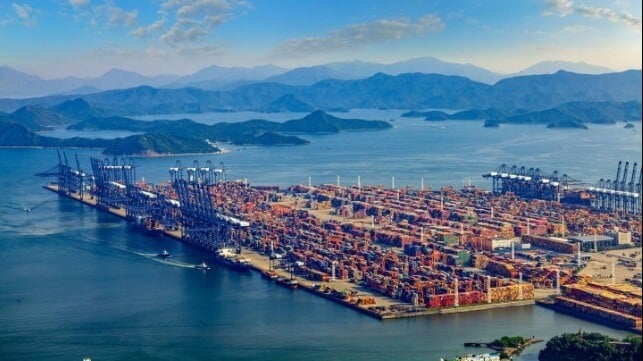China Implements New COVID Lockdowns Creating Supply Chain Fears

Just as it appeared that much of the world was seeing declining numbers of COVID-19 cases and the Omicron wave might be subsiding, China announced sweeping new lockdowns in the face of rapid increases in the number of positive tests for the virus. China and the shipping industry moved quickly in an attempt to quell some fears and misinformation saying shipping was working as normal, but the lockdowns nonetheless will impact manufacturing and other sectors even if the ports can continue to operate.
China has been implementing a strict zero-tolerance policy and on Sunday announced lockdowns that would span 19 provinces reaching major industrial and port areas including Shenzhen and sections of Shanghai, home to the two largest container ports in the world. While overall case numbers remain low, China saw positive tests more than double overnight and triple over the course of three days this weekend. As a result, Shenzhen, a city of 17.5 million people, was ordered into a strict lockdown beginning today. All nonessential workers are required to stay home for one week and during that time the adult population will be tested three times for the virus.
One of the region’s large logistics companies, SEKO Logistics, issued a statement on Sunday saying ports were closing and that ships would be diverting from the Shenzhen region, but today backtracked saying the ports and specific Yantian were operating normally. Similarly, Maersk issued a customer bulletin saying, “Terminals in the main ports remain business as usual including vessel operation, yard handling, and gate-in & out. We are closely monitoring the situation and aim to bring you the most up-to-date information so that we can continue to serve our customers’ supply chain needs given the context of the situation.”
Workers at China’s main industrial ports live in barracks and typically are closely monitored. It is unclear if they will be counted as essential workers for the current lockdowns, but in the past, they have been able to continue to work under close supervision and with limited access to the broader community. China said it would further tighten controls requiring all truck divers seeking to enter port areas to provide a negative COVID test and be tested again at the entry.
“The lockdown in China is expected to bring further turmoil into the already broken supply chain, however, warns Container xChange in a bulletin about the current situation. “The lockdowns in Shenzhen, Zhejiang, Shanghai, Jilin, Suzhou, Guangzhou and Beijing (19 provinces as of Sunday, probably more to come in a few days) imposed now will clearly heavily restrict container movement at these ports which will, as we’ve seen in the past, prove to be further damaging for the global supply chain.”
Among the concerns is that Shenzhen is one of the primary manufacturing zones for electronics. Foxconn, a major supplier for Apple, announced on Monday that it had closed two of its largest manufacturing operations in the province and expects them to remain closed for the week-long stay-home order. As much as 90 percent of China’s electronics manufacturing comes from the region and passes through the port at Shenzhen.
Shenzhen also closely borders Hong Kong which has been attempting to control dramatic surges in the virus ordering its own lockdowns. To expand the controls, the city and provincial governments agreed to start immediately further limiting border crossings with the city. The ferry running from Shenzhen to the Hong Kong airport is being suspended and trucks seeking to cross the border will be required to switch drivers at the border.
The latest problems come as the shipping industry remained on edge over the war in Ukraine and with memories of the disruptions causes last year by outbreaks of COVID-19 that hit both Shenzhen and the Yantian International Container terminal at the port. Container xChange, however, indicates that two weeks after “Russia’s invasion of Ukraine, there seems to be a negligible impact on the container prices and leasing rates in China.” Their analysis of the market shows that container availability improved after the Chinese New Year with prices falling. In their latest bulletin, they are however warning, “the supply chain must prepare for another turmoil in the coming months.”
“Lockdowns in China will further reduce capacity and cause a surge in already inflated shipping prices. The shockwaves will be felt across the U.S. and America, and almost everywhere in the world,” says Dr. Johannes Schlingmeier, co-founder and CEO, Container xChange.
While the ports may continue to function, the fear is that China’s latest restrictions are choking off the supply of exports which will create effects tumbling across the global supply chain in the coming weeks.
